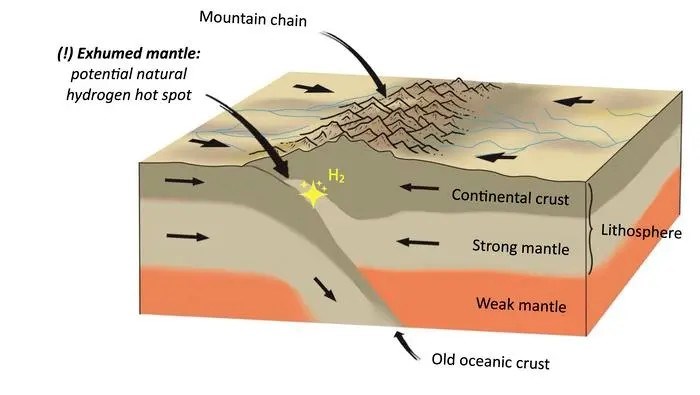 Although hydrogen is a clean fuel promising hope, the majority of its production is currently carried out with fossil fuels. A new study reveals that mountain rows can have large natural hydrogen reserves.
Although hydrogen is a clean fuel promising hope, the majority of its production is currently carried out with fossil fuels. A new study reveals that mountain rows can have large natural hydrogen reserves.Scientists at the GFZ Helmholtz Geological Sciences Center have discovered that hydrogen could occur with natural geological processes. Researchers made a plate tectonic modeling and revealed that there may be hydrogen hot spots in the mountains.
Pyrenes, Alps and Himalayas may be the source of hydrogen
The modeling shows that the areas around the mountain rows where deep mantle rocks are close to the surface are places that promise hope for natural hydrogen production. Some parts of Pyrenes, Alps and Himalayas may be the source of hydrogen.
The study states that mantle rocks of hydrogen can be produced in large amounts through serpentination, a process in which the mantle rocks of the mantle reacts with water and form new minerals and hydrogen gas. This event takes place with the fact that mantle rocks normally in the depths of the ground become close to the surface as a result of millions of years of tectonic activities.
 The approach of mantle rocks to the surface occurs mainly in two tectonic environments: riftization (separation of continents, such as the formation of the Atlantic Ocean) and mountain formation (collision of continents, such as pyrenes and alps).
The approach of mantle rocks to the surface occurs mainly in two tectonic environments: riftization (separation of continents, such as the formation of the Atlantic Ocean) and mountain formation (collision of continents, such as pyrenes and alps).In addition, the modeling reveals that the serpentine process is much more efficient in mountain rows compared to the rift basins. Simply put, the mountains can produce 20 times more hydrogen per year than Rift regions. The reason for this is that the mountains create ideal conditions such as optimum temperature, plenty of water sources and suitable reservoir rocks, thus making natural hydrogen production and storage much more efficient.
Discovery works continue
Interestingly, the study states that mountain rows offer suitable reservoir rocks (eg sandstone) for hydrogen accumulation, and that these savings can be removed through drilling. Discovery works in regions such as Pyrenes, Alps and Balkans with early symptoms of natural hydrogen are already continuing.
Hydrogen is considered a green fuel that has long promised hope for a long time because of its clean combustion properties that produce water as a by -product. Hydrogen is expected to be used extensively in the future, especially in aviation, sea transportation and steel production.